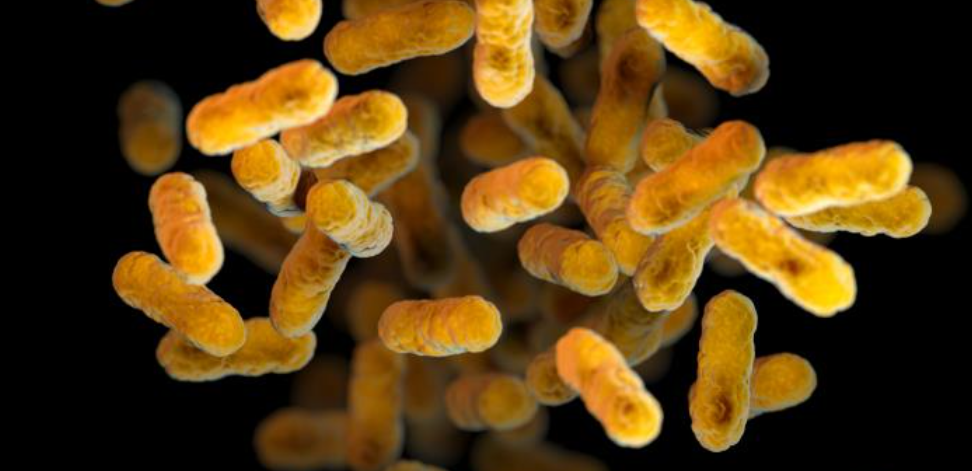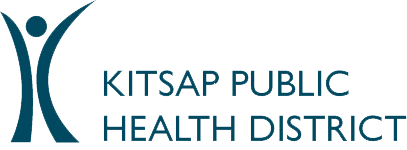
ACTIONS REQUESTED
BE AWARE of an increase in pertussis and influenza activity in Kitsap County and across Washington state.
PERTUSSIS
Persons at high risk for pertussis:
- Infants younger than one year or pregnant people
- Pregnant people in the last trimester (who will expose infants)
- Healthcare workers with direct patient contact (who may expose infants, pregnant people, or others who have contact with infants or pregnant people)
- Anyone who may expose infants younger than one year or pregnant people (e.g., childbirth educators, childcare workers, members of a household with infants)
CONSIDER pertussis infection in the following situations:
- Respiratory symptoms in infants younger than 12 months, especially if accompanied by difficulty feeding or apnea
- A cough illness, in patients of any age, that is characterized by one or more of the following:
- Paroxysms
- Gagging, post-tussive emesis, or inspiratory whoop
- A duration of 2 weeks or more
- Respiratory illness of any duration in patients who have had contact with someone known to have had pertussis or symptoms consistent with pertussis
IF YOU SUSPECT PERTUSSIS IN A PATIENT:
- Collect a nasopharyngeal swab for pertussis polymerase chain reaction (PCR) or culture. PCR is the most sensitive and fastest diagnostic test. Culture is the most specific option, but not the most sensitive, and is rarely done. Note that serology should not be used for diagnosing pertussis cases in Washington.
- A negative pertussis PCR or culture result cannot rule out pertussis. Treatment and case reporting may still be warranted, even with negative test results, per clinician’s assessment.
- CDC provides information about best practices for using PCR to diagnose pertussis.
- Report clinically suspected pertussis cases within 24 hours to Kitsap Public Health District. Call Kitsap Public Health 24/7 at (360) 728-2235 during clinical encounters with a suspected pertussis case. We will assist you in determining recommendations for prophylaxis and exclusion.
- Advise patient to stay home from work, school, or childcare. Advise them that they are considered contagious until they have completed 5 full days of appropriate antibiotics.
- Follow CDC’s detailed treatment guidance. Treatment is most effective if initiated within 1-2 weeks of symptom onset.
- Consider preventive antibiotics for the entire household if a member meets any “High Risk” criteria (above).
- Ensure children and adults are up-to-date on vaccine protecting against pertussis as recommended by national guidelines. Current vaccine schedules can be found on the CDC Immunization Schedules webpage.
- Prioritize vaccination of household members and other close contacts of infants.
- Tdap is recommended during each pregnancy after 20 weeks gestation (ideally during weeks 27 through 36).
Diagnosing pertussis can be difficult, particularly during the early (catarrhal) stage of illness, which features non-specific symptoms and may not initially include a cough. For a patient with respiratory symptoms, known or suspected exposure to pertussis should prompt inclusion of pertussis in the differential diagnosis.
The incubation period for pertussis ranges from 5 to 21 days. A key feature that distinguishes pertussis from other common respiratory illnesses is the duration of the cough (usually longer than two weeks and can last 10 weeks or longer).
INFLUENZA
Persons at high risk for severe influenza:
- Adults 65 years and older
- Children younger than 2 years old
- People with asthma and/or chronic lung disease (such as chronic obstructive pulmonary disease [COPD] and cystic fibrosis)
- Pregnant people
- People with a weakened immune system due to disease or immunosuppressive medications.
- Anyone who may expose infants younger than one year or pregnant people (e.g., childbirth educators, childcare workers, members of a household with infants)
CONSIDER influenza in patients presenting with the following:
- Fever
- Headache
- Fatigue
- Dry cough
- Sore throat
- Some people may have vomiting and diarrhea, though this is more common in children than adults.
Influenza virus testing is not required to make a clinical diagnosis of influenza in outpatients with suspected influenza, particularly during increased influenza activity.
IF YOU SUSPECT INFLUENZA IN A PATIENT:
- Advise patient to stay home and avoid unnecessary contact with others while symptomatic until they have been fever-free for 24 hours and their symptoms are improving. Patients experiencing severe or worsening symptoms should seek medical care.
- Recommend core prevention strategies from the CDC, including physical distancing, hand hygiene, and masking.
- Test patient for common seasonal respiratory viruses, including influenza, COVID-19, and respiratory syncytial virus (RSV).
- Be aware that CDC issued a HAN advisory on 1/16/2024 requesting that clinicians and laboratories prioritize faster subtyping of all influenza A specimens among hospitalized patients (particularly those in an intensive care unit (ICU), and increase efforts at clinical laboratories to identify non-seasonal influenza. The objective of this measure is to improve the timeliness of detection of avian influenza A (H5N1) infections. The advisory can be read in full on the CDC website.
- Prescribe antiviral treatment for any patient with suspected or confirmed influenza who:
- is hospitalized;
- has severe, complicated, or progressive illness; or
- is at higher risk for influenza complications.
- Consider starting early (≤48 hours after illness onset) empiric antiviral treatment of non-higher-risk outpatients with suspected influenza, based upon clinical judgment, including without an office visit. SARS-CoV-2 and other etiologies of acute respiratory illness should also be considered.
- Ensure children and adults are up-to-date on vaccine protecting against influenza as recommended by national guidelines. Current vaccine schedules can be found on the CDC Immunization Schedules webpage.
HIGHLY PATHOGENIC AVIAN INFLUENZA: H5N1
To date, there has been no person-to-person transmission of H5N1 and the CDC categorizes risk to the public as low.
- Ask patients presenting with influenza symptoms and/or conjunctivitis about exposures to animals and animal materials.
- Consider the possibility of infection with novel influenza A viruses in patients who present with acute respiratory infection (ARI) symptoms or conjunctivitis, and who have had recent direct or close contact <10 days prior to illness onset to animals and materials from animals potentially infected with HPAI A(H5N1) virus.
- Notify Kitsap Public Health when considering testing for HPAI. We can provide clinical and testing guidance. Novel influenza (including H5N1) is immediately notifiable in Washington state.
Be aware commercial influenza A tests will detect influenza caused by H5N1 variants but will not discern between influenza A strains.
BACKGROUND
Pertussis and influenza are currently both circulating at elevated levels in Kitsap County and in Washington state.
Pertussis:
Prior to the COVID-19 pandemic, Washington state typically reported between 600 – 800 pertussis cases during non-epidemic years, with higher transmission occurring every three to seven years. Similar to the rest of the United States, Washington experienced lower than usual pertussis activity during the pandemic (2020 – 2022), but now appear to be returning to prepandemic patterns. Since the beginning of 2024, there have been over 2,000 laboratory-confirmed and epidemiologically-linked pertussis cases reported in Washington state, with the bulk of cases reported toward the end of the year. This represents a greater than 20-fold increase from the previous year and is the highest annual number of cases reported since the 2012 epidemic. The highest case rates have been reported in children under 12 months, children aged one to four years, and adolescents aged 14 to 18 years. Counties in southwest and eastern Washington have been among those most impacted. During the 2012 pertussis epidemic in Washington state, there were a total of 4,916 cases, 105 hospitalizations, and one infant death.
Since October 1, 2024, there have been 16 laboratory-confirmed and epidemiologically-linked pertussis cases reported in Kitsap County, over half of which have occurred in school-aged children and adolescents. Kitsap Public Health has been working with schools and community organizations where cases have been identified to notify people at higher risk who may have been exposed, and to limit further spread in the community.
Vaccination for pertussis is recommended for persons of all ages in the U.S. and is critical to prevent severe illness in infants and young children. Around one in 10 Kitsap children entering kindergarten in September 2023 were not up-to-date on their pertussis vaccines. Vaccination of pregnant people is important to protect newborns and infants, and healthcare providers should strongly recommend and offer Tdap vaccination to pregnant people in the third trimester of each pregnancy regardless of prior vaccination history.
Weekly state surveillance updates are available online.
Influenza:
Influenza activity in Kitsap County and in Washington state is currently very high. Indicators for influenza-associated emergency department visits, hospitalizations, and percent of specimens tested for influenza which are positive are currently well above baseline levels and exceed peak levels observed during the previous respiratory season. From September 29, 2024 through January 4, 2025, there have been 25 laboratory-confirmed influenza-associated deaths reported in Washington state. Influenza A is currently the most frequently detected respiratory virus reported by Washington state sentinel reporting laboratories, and by the University of Washington’s regional laboratory surveillance. In the Puget Sound region, several long-term care facilities have recently reported influenza outbreaks.
Vaccination for influenza reduces the risk of severe disease, including pneumonia, hospitalization, and death. Immunizations are especially important for people at increased risk for severe disease, including infants, older adults, pregnant people, and people with certain underlying medical conditions.
Weekly Kitsap County surveillance updates are available on our website.
Weekly state surveillance updates are available online.
Avian Influenza:
A panzootic of highly pathogenic avian influenza A(H5N1) viruses is currently affecting wild birds. In the United States, there have been outbreaks with these viruses among poultry and dairy cows, as well as infections among other animals. Since 2022, 67 total human cases of avian influenza A(H5) virus infection have been identified in the United States, with 66 of these cases occurring in 2024. Most infections in humans have been clinically mild, but one fatality has been reported. Many individuals infected with avian influenza A(H5) viruses have reported unprotected workplace exposures, such as handling infected or sick dairy cows or poultry without using recommended personal protective equipment. However, one case involved exposure to backyard poultry or wild birds. The source of the exposure in two confirmed cases in the United States could not be determined.
There have been 11 laboratory-confirmed cases in eastern Washington, all of whom were identified during active monitoring of workers involved in the culling of ill flocks.
CDC situation updates on avian influenza in the U.S. are available online.
MORE RESOURCES:
- CDC’s Pertussis Clinical Features
- CDC’s Best Practices for Healthcare Professionals on the use of PCR for Diagnosing Pertussis
- CDC’s Influenza for Healthcare Providers
- CDC’s Influenza Specimen Collection
- CDC’s Conjunctival Swab Specimen Collection for Detection of Avian Influenza A(H5) Viruses
- ACIP’s Immunization Schedules
- DOH’s Respiratory Illness Dashboard
- KPHD’s Respiratory Illness page
